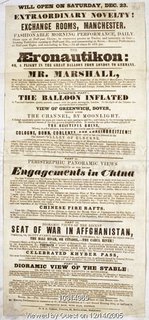
Banksy does it well at the Brooklyn Museum of Art.
Hippy New Year and peace to all.............





"writing or printing texts denying Elizabeth's ecclesiastical and temporal authority; advocating the rights of anyone else to that authority; advocating rebellion; calling her a heretic or usurper; slandering or defaming her. Writing, publishing or printing texts with rumors, libels or slanders against the Queen"
"Let me turn to the question of state control, the history of censorship. This relates to the question of state power and monopoly. The English government from the advent of printing is interested in controlling this new technology. There are various acts, usually called licensing acts, that impose control. You begin to read these statutes and your blood chills: sedition and heresy are common terms; anybody who imports or circulates a book will be drawn and quartered. And there are occasions when people are hanged or burned or their books burned.
But there is another agenda operating here as well, perhaps more centrally. The Licensing Act of 1662 begins with a series of ghastly clauses about suppression of freedom of thought, but suddenly it turns into a series of commercial privileges, guaranteeing a handful of printers a monopoly over the trade. The real issue is not sedition or heresy; the real issue is piracy. How can you prevent your competitors from printing your book, to which you have some right?"
1. A person encourages another to violently overthrow the Constitution or any Australian government.
2. A person encourages another to violently interfere with federal elections.
3. A person urges a racial, religious, national or political group to use violence against another group, where the violence threatens; "peace, order and good government".
4& 5 Urging a person to assist organizations or countries fighting militarily against Australia; even if Australia has invaded another country unlawfully. Countries or organizations need not be formally proclaimed as enemies. Australians may be prosecuted for condemning illegal violence by their government, or for seeking to uphold the United Nations Charter.
"The defences are also anachronistic, since they are based closely on the defences to English common law crimes of sedition found in a famous English criminal law text book of 1887 (Sir James Fitzjames Stephen, A Digest of the Criminal Law, 3rd ed, 1887, article 93). They are defences for a different era; less rights-conscious, and eager to protect the reputation of Queen Victoria. Such narrow defences have no place in a self-respecting modern democracy."
"USA, Australia and Canada proposed that the FIG [Forum for the Internet Governance] be convened by the Internet Society; an association that supports the ad-hoc bodies active in the growth of the internet -- thereby suggesting that the UN should have absolutely no role and competencies in internet-related matters." (APEC-WSIS Blog)
